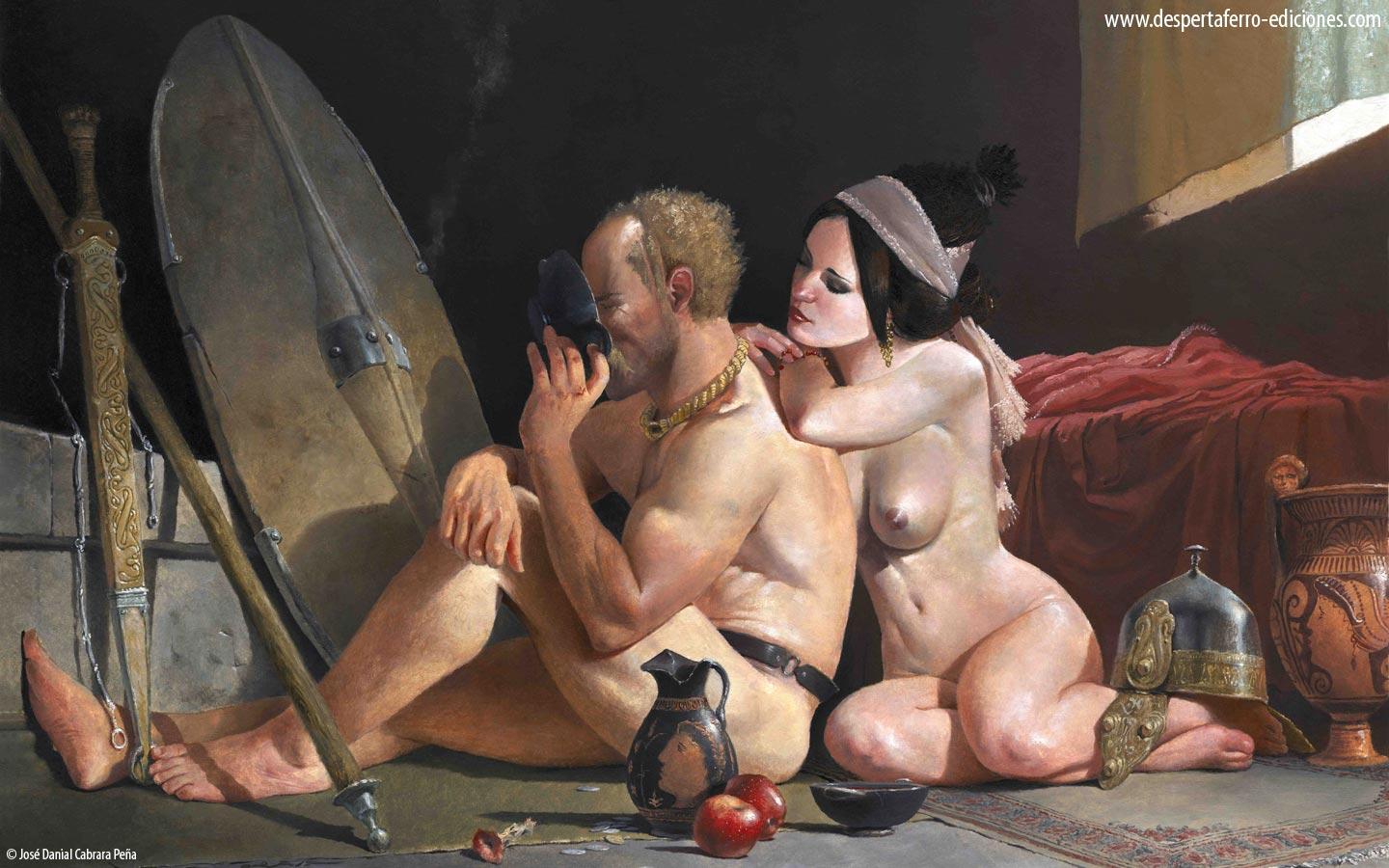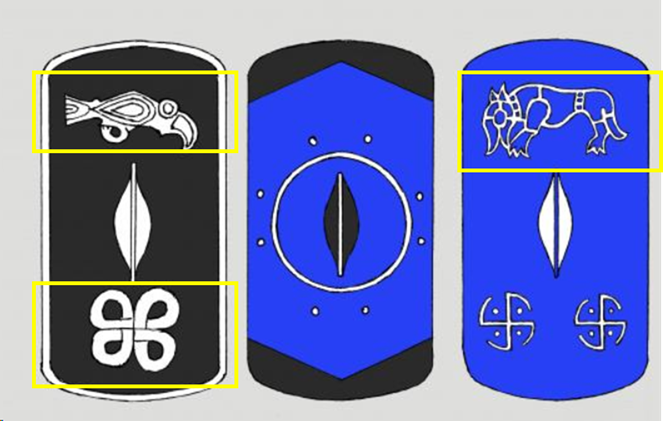-
Posts
2.379 -
Joined
-
Last visited
-
Days Won
80
Everything posted by Genava55
-
.thumb.jpg.b21ca1d0c15fb56b42c39b25a0a40815.jpg)
Archaeological potpourri
Genava55 replied to Gurken Khan's topic in Introductions & Off-Topic Discussion
-
.thumb.jpg.b21ca1d0c15fb56b42c39b25a0a40815.jpg)
===[TASK]=== (early) German Shield Patterns
Genava55 replied to wowgetoffyourcellphone's topic in Official tasks
Animal representations were extremely rare at this time on the material that survived. And when it is the case, the depiction and the style are simplistic. The earliest form of emblematic native art appeared with the bracteates, during the Roman Empire. -
.thumb.jpg.b21ca1d0c15fb56b42c39b25a0a40815.jpg)
===[TASK]=== (early) German Shield Patterns
Genava55 replied to wowgetoffyourcellphone's topic in Official tasks
-
.thumb.jpg.b21ca1d0c15fb56b42c39b25a0a40815.jpg)
Art needed: remaining nomadic structures
Genava55 replied to real_tabasco_sauce's topic in Art Development
Herodotus, book 4, ch.62 : This is their way of sacrificing to other gods and these are the beasts offered; but their sacrifices to Ares are of this sort. Every district in each of the governments has a structure sacred to Ares; namely, a pile of bundles of sticks three eighths of a mile wide and long, but of a lesser height, on the top of which there is a flattened four-sided surface; three of its sides are sheer, but the fourth can be ascended. Every year a hundred and fifty wagon-loads of sticks are heaped upon this; for the storms of winter always make it sink down. On this sacred pile an ancient scimitar of iron is set for each people: their image of Ares. They bring yearly sacrifice of sheep and goats and horses to this scimitar, offering to these symbols even more than they do to the other gods. Of enemies that they take alive, they sacrifice one man in every hundred, not as they sacrifice sheep and goats, but differently. They pour wine on the men's heads and cut their throats over a bowl; then they carry the blood up on to the pile of sticks and pour it on the scimitar. They carry the blood up above, but down below by the sacred pile they cut off all the slain men's right arms and hands and throw these into the air, and depart when they have sacrificed the rest of the victims; the arm lies where it has fallen, and the body apart from it. Archaeological evidence: https://www.academia.edu/11582741/Scythian_sanctuaries_of_Ares_archaeological_date_and_Herodotus_testimonies_in_English_ -
This new form of racism is : Everything not ethnically English should have an accent for more visibility and portrayal. Russians must speak English but with Russian accent, Greeks must speak with Greek accent, French people with French accent, Arabs with Arabian accent etc. etc. Assassin's Creed English voices do that frequently for example. Ghost of Tsushima voice acting is also doing it in English while the actual actor is speaking perfect English with no accent naturally. My mother tongue is French and when I hear English with French accent in video games in odd context, I want to break the jaws of the executives.
-
The new voice acting choose the path of the neo-racism in vogue in mainstream media:
-
I think it will be a huge success
-
.thumb.jpg.b21ca1d0c15fb56b42c39b25a0a40815.jpg)
Age of Empires 2 Definitive Edition
Genava55 replied to Lion.Kanzen's topic in Introductions & Off-Topic Discussion
An interesting video about the assembly code of the original AoE. (Remember the definitive edition has been rewritten in C++) -
.thumb.jpg.b21ca1d0c15fb56b42c39b25a0a40815.jpg)
Archaeological potpourri
Genava55 replied to Gurken Khan's topic in Introductions & Off-Topic Discussion
I don't see anything unusual, you should compare Pompei and Gobekli Tebe. Both are not entirely excavated and won't be in a close future. -
.thumb.jpg.b21ca1d0c15fb56b42c39b25a0a40815.jpg)
Archaeological potpourri
Genava55 replied to Gurken Khan's topic in Introductions & Off-Topic Discussion
https://youtube.fandom.com/wiki/Bright_Insight https://science.feedback.org/reviewed-content-author/jimmy-corsetti/ https://m.jpost.com/omg/article-748550 -
Thanks it is clear. I was surprised by the bright red and I thought it could cause issue. I think I have respectful opinions in general
-
Is the bright red associated to the player colour or is it fixed/constant red?
-
Already discussed in the second page and in the third page where your message is in...
-
One year freezing
-
Yes. OpenGL seems to be more heavy on the CPU than Vulkan, replacing it was a major improvement. I hope we will see A27 this year.
-
The encyclopedia is made on the svn A27 or the A26?
-
The python issue seems to be solved: https://code.wildfiregames.com/D5227
-
[English below] Actuellement, le jeu est divisé en trois phases: - La phase des villages. - La phase des villes. - La phase des cités. Le problème avec ce système, c'est qu'il est centré sur le concept de développement urbain et sur le développement des grandes civilisations méditerranéennes. C'était déjà pas très pertinent pour les civilisations telles que les Gaulois et les Britons, mais ça va le devenir encore moins si on ajoute des peuples nomades comme les Scythes. Je propose un système un peu plus neutre: Ascension / Expansion / Apogée Ascension : Cette phase initiale évoque le début du développement de la civilisation, où elle s'élève de ses modestes débuts vers des horizons plus vastes. Cela peut symboliser la période où les fondations sont posées et où les premières avancées sont réalisées. Expansion : Cette phase représente la période où la civilisation s'étend et prospère, colonisant de nouveaux territoires, élargissant son influence et sa puissance. C'est une étape de croissance et d'exploration. Apogée : La phase finale, l'apogée, suggère le sommet de la civilisation, où elle atteint son plein potentiel en termes de culture, de technologie et de pouvoir. C'est le moment où la civilisation rayonne de sa plus grande splendeur. The game is currently divided into three phases: - Village phase. - Town phase. - City phase. The problem with this system is that it focuses on the concept of urban development and the development of the great Mediterranean civilizations. It wasn't relevant enough for civilizations such as the Gauls and Britons, but it's going to become even less so if we add nomadic peoples like the Scythians. I propose a more neutral system: Ascent / Expansion / Zenith Ascent (or ascension): This initial phase evokes the beginning of the development of civilisation, where it rises from its modest beginnings to broader horizons. It can symbolise the period when the foundations are laid and the first advances are made. Expansion: This phase represents the period when civilisation expands and prospers, colonising new territories and extending its influence and power. This is a stage of growth and exploration. Zenith: The final phase, the apogee, suggests the pinnacle of civilisation, where it reaches its full potential in terms of culture, technology and power. This is the moment when civilisation radiates its greatest splendour.
-
I knew you would delete both messages anyway... I was just impressed by the nasty bot which made a very generic message about the 13th century to lure people.
-
Is my idea bad or impossible to implement?
-
DirectX vs Vulkan: Battle of the Modern Graphics APIs https://beebom.com/directx-vs-vulkan/ OpenGL vs Vulkan https://thatonegamedev.com/cpp/opengl-vs-vulkan/ Two interesting articles, this should really emphasizes the importance of the changes for A27.
-
This stone baba is from the Scythian period so no issue. The deer stone pillar is a bit older vut it is fine, it was still used by the Scythians even if they didn't build it. For the sake of diversity we can let it pass through.
-
.thumb.jpg.b21ca1d0c15fb56b42c39b25a0a40815.jpg)
Others RTS - Discuss / Analysis
Genava55 replied to Lion.Kanzen's topic in Introductions & Off-Topic Discussion
Manor Lords






